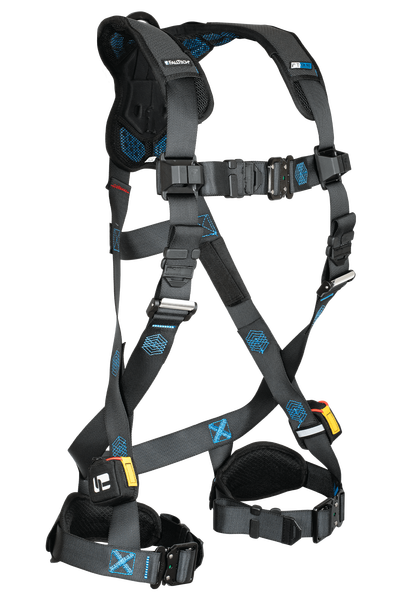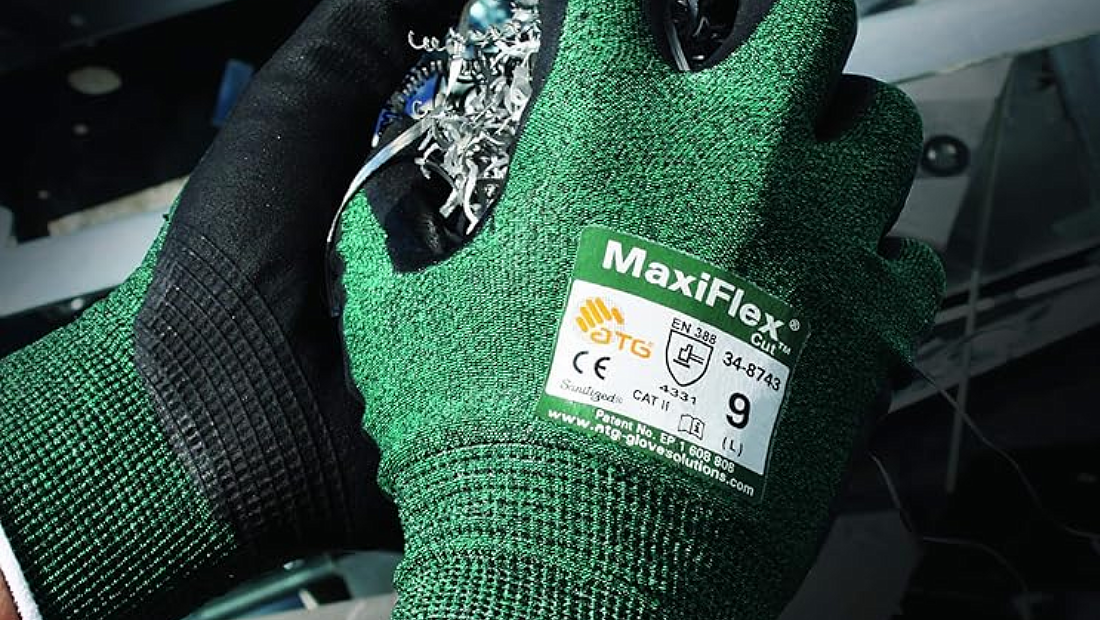What does my Glove Cut Rating Mean?
Understanding Cut Scores:
In order to ensure the safety and level of expectation on a gloves ability to protect you from Hazards, a standardized system has been put in place to test a gloves' ability to resist cuts.
These standards have been developed by the ANSI and use a number grading system. The glove material is tested with a specially designed machine called a TDM-100. This Machine is designed to determine linear cut resistance of a material from sharp edges, such as knives, sheet metal parts, glass, and tools.

Based on the level of vertical force exerted on the blade, the glove is given a cut score, ranging from 1-9. The higher the number, the higher resistance. See below for a list of ANSI Cut Ratings, and suitable applications.
Looking to buy cut gloves? Shop Our Selection
A1 - 200g-499g - Low Cut Hazard
For situations where there is very little risk of cuts, A1 rated gloves are suitable.
Examples: General Purpose Gloves, Assembly, Shipping & Receiving, Landscaping, Warehouse Work.
A2 - 500g-999g - Light Cut Hazards
A slightly elevated level of protection. If a greater use of force is used, or if there is exposure to more items that could cause a cut, A2 rated gloves are more suitable.
Our Favourite Cut A2 Glove:
ATG MaxiFlex Cut - Fantastic Dexterity, Grip, with Cut A2 hand protection.
Examples: General Purpose, Automotive Assembly, Pulp & Paper, Material Handling.
A3 - 1,000g-1,499g - Light/Medium Cut Hazards
Jobs where there is more common light contact with blades and Sharp Objects will often use an A3 rated glove.
Examples: Manufacturing, Parts Handling, Assembly
A4 - 1,500g-2,199g - Medium Cut Hazards
A4 Rated protection is typically the standard minimum protection rating for duties with a high level of exposure to metal and sharp objects.
Examples: Light Metal Fabrication and Handling. HVAC, Sheet Metal Installation, Food Processing, Electrical Work, Drywall and Carpet Installation.
A5 - 2,200g-2,999g - Medium/High Cut Hazards
Protection of an increased amount of force and stress, for heavier metal fabrication applications.
Examples: Sheet Metal, HVAC, Parts Assembly with more exposure to Sharp Objects.
A6 - 3,000g-3,999g High Cut Hazards
For duties with consistent exposure to sharp and dangerous materials.
Examples: Glass and Window Manufacturing, Metal Fabrication, Salvage Yards, Changing Blade Machines
A7 - 4,000g-4,999g - High Cut Hazards
Increased protection for duties with high exposure to dangerous objects.
Examples: Glass, Food and Meat Preparation, Metals, Demolition, Glass Cutting
A8 - 5,000g-5,999g - High Cut Hazards
As the 2nd highest rating, these glove are extremely protective. Often these gloves will offer impact protection, but still enough dexterity and maneuverability.
Examples: Heavy Assembly, Recycling, Oil and Gas, Drilling, Heavy Equipment Operation
A9 - 6,000g+ - Heavy Duty/Extreme Cut Hazards
The Maximum rated Cut protection. At this level, the force of over 6,000g makes these gloves thick, and heavily protective.
Examples: Mining, Demolition, Heavy Equipment, Drilling, Sharp Metals, Assembly, Recycling, Metal Stamping
Final Thoughts
This guide will help you navigate the world of Cut Resistant gloves, and choose the appropriate level of protection for your Job. Understanding ANSI cut ratings will help you minimize trial and error when choosing a glove style.
Another component to gloves are the various styles of coatings, such as Nitrile, PU, Latex. These materials also play into the durability of your glove. You can learn more about dipped gloves and coatings at our article here.
Shop our selection of cut resistant gloves!


